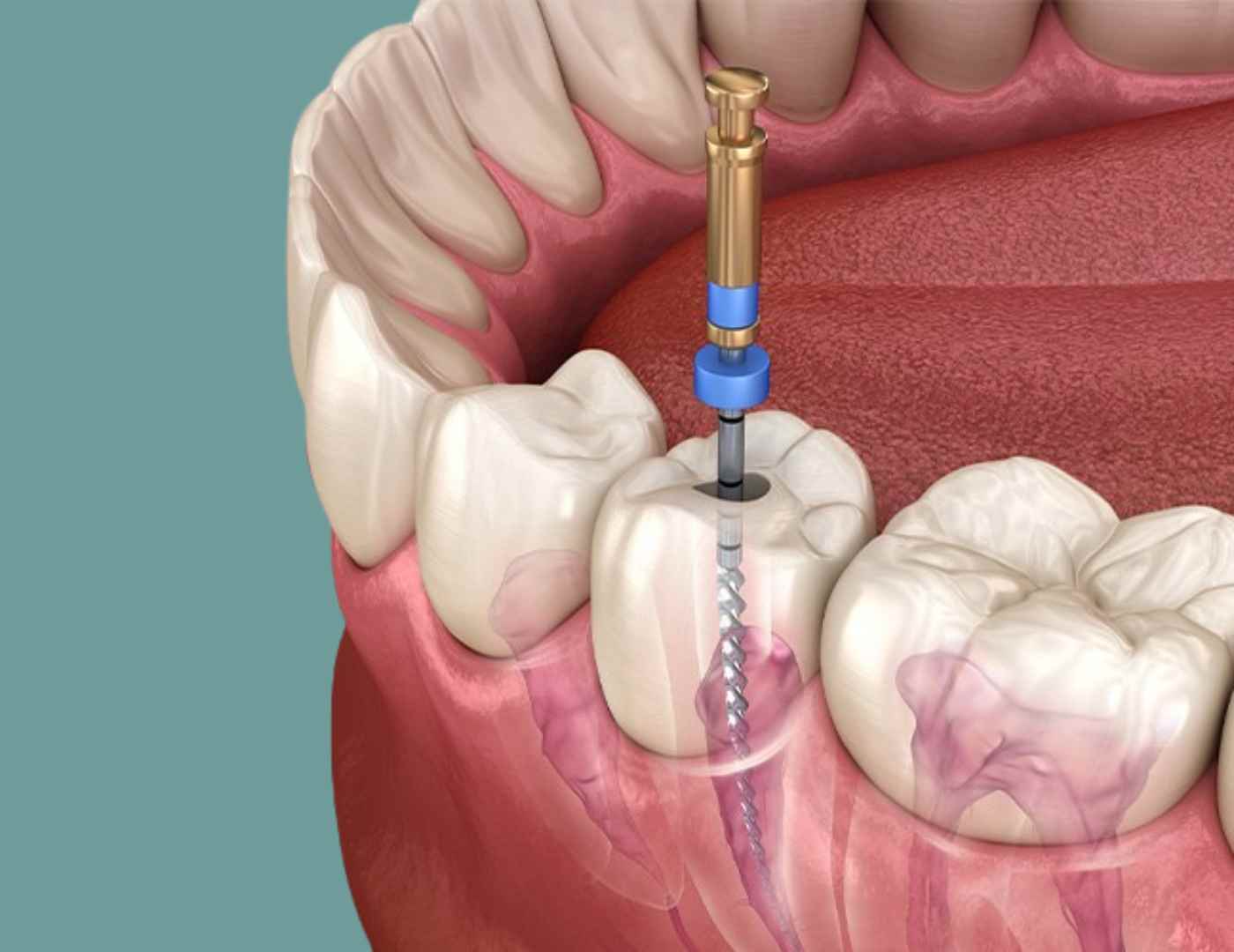Strong Teeth, Fresh Breath, Brighter You.
Why You Need a Root Canal: From Simple Filling to Saving Your Tooth
Language :

Topics:
What Happened
Your tooth started with a small cavity that could have been repaired with a normal filling. But when dental decay is left untreated, bacteria multiply rapidly and spread deeper into the tooth — from the hard enamel layer, through the dentin, and finally into the pulp (nerve).
Once bacteria reach the pulp, the nerve becomes infected and inflamed — a condition called irreversible pulpitis. At this stage, the tooth can no longer heal on its own, and pain often becomes severe. The only way to save the tooth is through Root Canal Treatment (RCT).
Why the Tooth Can’t Just Heal Itself
Unlike bone or skin, teeth cannot regenerate once bacteria have reached the pulp. The infection continues to spread, creating pressure, pain, and sometimes swelling. Without treatment, it can lead to:
-
A dental abscess (pus pocket)
-
Swelling of the face or jaw
-
Bone infection around the tooth root
-
Eventual tooth loss
Root Canal Treatment: What Happens
-
Numbing – The dentist will make sure the tooth is fully anesthetized.
-
Cleaning – The infected nerve tissue is removed from the root canals.
-
Disinfection – The canals are cleaned and medicated to remove bacteria.
-
Filling and Sealing – The empty canals are filled with a biocompatible material to prevent reinfection.
-
Restoration – The top of the tooth is restored with a filling or crown to strengthen and protect it.
How Long It Takes
| Stage | Time Frame | Notes |
|---|---|---|
| Pain Relief / Emergency Visit | 0–2 days | Pain usually subsides within 24–72 hours after the first treatment. |
| Root Canal Completion | 1–2 visits (1–2 weeks total) | Depends on infection and tooth anatomy. |
| Final Restoration (Crown) | Within 14 days | Essential for long-term success. |
| Healing of Bone (if infection existed) | 3–12 months | Confirmed by X-ray at follow-up. |
Home Care After Treatment
-
Take prescribed pain relievers as directed.
-
Avoid chewing on the treated side until fully restored.
-
Brush and floss gently.
-
Follow up for your permanent restoration (crown or filling).
-
Return for regular X-rays to monitor healing.
What Happens If You Wait Longer
-
The infection can spread to the surrounding bone and soft tissues.
-
You may need tooth extraction instead of RCT.
-
Pain and swelling can become severe or systemic.
-
Future replacement (implant or bridge) will cost much more.
Prevention Tips
Visit Your Nearest Dental Clinic
If you’re in Cebu or nearby areas, find the closest recommended dentist through our directory:
https://cebudentalimplants.com/map-dental-clinic
Summary
“It’s always cheaper and easier to treat a small cavity than to wait for a root canal.”
Don’t delay — early detection can save your tooth, your time, and your wallet.




